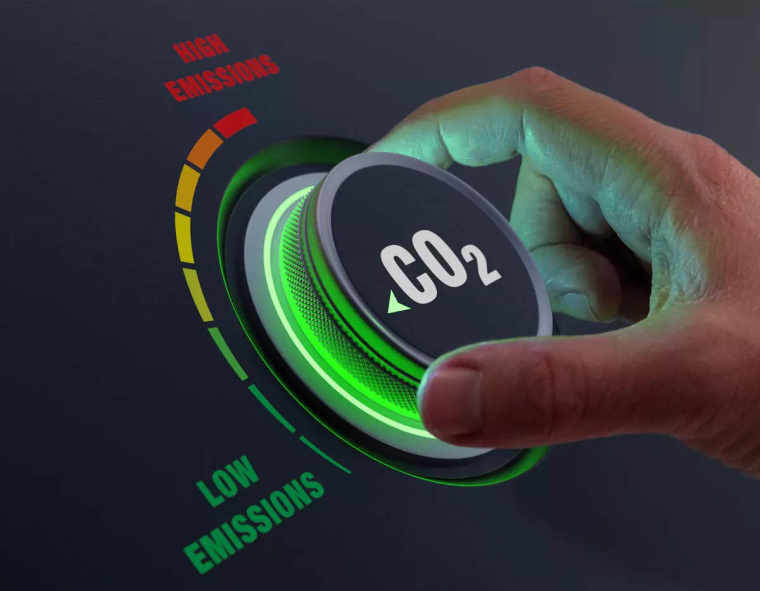
In light of the ever-worsening climate crisis, individuals and businesses are actively exploring solutions to mitigate their carbon emissions.
An effective strategy involves striving for carbon neutrality, wherein the emission of carbon dioxide is balanced by removing an equivalent amount from the atmosphere.
A pivotal step towards attaining this objective is meticulous tracking and analyzing energy consumption.
By doing so, one can pinpoint areas that need improvement and implement effective strategies for reducing carbon emissions so that you aren’t contributing to climate change.
Understanding Carbon Footprint
To embark on the journey toward carbon neutrality, the first step entails understanding one’s carbon footprint.
This crucial metric encompasses the total amount of greenhouse gasses, primarily carbon dioxide, emitted directly or indirectly due to individual or business activities.
Fortunately, a plethora of online carbon calculators are readily accessible, which aids in estimating the carbon footprint based on diverse factors like home electricity usage, transportation, and waste disposal.
This year, World Bank data revealed that the average American’s annual contribution to greenhouse gasses amounted to about 13 tons.
Comparatively, the global average per person’s carbon footprint stood at 4.3 tons yearly.
To combat the climate crisis and align with the Paris Agreement’s objectives, which seek to limit global warming to 1.5 degrees Celsius within the next 30 years, a substantial reduction in emissions is imperative. This necessitates cutting emissions by half for everyone.
The ultimate goal is to reduce our carbon footprint of 2 tons per capita per year by 2030 and attain net-zero emissions by 2050.
Furthermore, the Deep Decarbonization Pathways Project has established a critical benchmark to limit global warming to 2°C or less by 2050.
However, our present reality stands in stark contrast. According to nature.org, the average carbon footprint per capita in the United States exceeds a troubling 16 tons, leaving much work to do to reach the 2-ton target.
Tracking Energy Consumption
To effectively counteract carbon footprint, individuals and businesses must diligently monitor their energy consumption.
For individuals, this involves keeping a close watch on household electricity, heating, cooling, and transportation fuel usage.
Meanwhile, businesses need to delve into their overall energy consumption, including electricity, heating, manufacturing processes, and logistics.
Thankfully, modern technology has simplified the process of monitoring home energy usage.
By implementing monitoring systems, users gain access to daily or monthly data that illuminates their power consumption patterns.
These energy monitors will indicate whether energy usage is increasing or decreasing and identify specific periods when changes occur.
Drawing on the insights provided by energy monitors, users can accurately assess their daily or monthly power consumption.
This empowers them to make informed decisions on how to effectively reduce electricity consumption (measured in kWh) within their homes.
While there is no universally applicable approach to keeping track of energy usage, several standard methods allow users to monitor the kWh they accumulate.
An example is using a smart home energy monitor. This serves the dual purpose of tracking the user’s power usage and identifying the appliances or devices used most frequently in their house.
By making effective use of this energy monitor, users can make substantial strides in decreasing their energy consumption, leading to lower electricity bills and increased savings in the long run.
Meanwhile, individuals can use carbonfootprint.com to calculate their carbon footprint to understand the rate of their environmental impact.
The Environmental Protection Agency (EPA) carbon footprint calculator can also estimate the amount of carbon and funds saved by taking specific actions to reduce emissions.
The carbon footprint calculator offers the advantage of identifying the aspects of our daily routines contributing the most to carbon emissions. This enables us to explore optimal strategies for reducing them.
Reducing Carbon Footprint
Following the review of personal carbon footprint calculations, we can now look at several key methods to mitigate carbon emissions by adopting different approaches to daily activities.
Renewable Energy
One of the most impactful ways for people to reduce their carbon footprint is to transition to renewable energy sources.
Renewable energy sources like solar, wind, hydroelectric, and geothermal power produce minimal greenhouse gas emissions, making them an environmentally-friendly option.
Homeowners can install solar panels on rooftops or invest in renewable energy credits (or other offset methods) to offset their electricity usage with clean energy.
Businesses can acquire renewable energy from the grid or invest in on-site renewable energy installations.
However, some regions have green energy programs that allow consumers to choose renewable energy sources as their primary power supply.
Efficient Transportation
Making vehicle maintenance a regular priority is essential for driving efficiently. Driving carefully without going too fast is also important to keep efficiency up. This includes adhering to speed limits, gradually accelerating and decelerating, and avoiding unnecessary idling.
Adopting these measures would enable people to save more money and, in turn, significantly reduce their driving emissions.
Less cars on the road thereby reducing the carbon footprint in naija 🙌🏽.. the president is working 😅
— Shinobi Hattori Hanzō 🥷 (@Monta_McLovin) July 20, 2023
Moreover, people can opt for non-driving alternatives when heading out. They can consider carpooling or ridesharing for regular activities, such as work.
Public transportation like buses or trains can also be considered instead of driving.
Alternatively, consider walking or using a bicycle if the destination is nearby. These options will contribute to a more environmentally friendly and cost-effective way of commuting.
Offset Carbon Emissions
Despite significant efforts to reduce energy consumption and transition to renewable sources, eliminating all carbon emissions may not always be possible.
flying, and using electricity, release greenhouse gasses into the atmosphere, contributing to global warming.
💡 But there's a solution! By offsetting our carbon footprint, we can neutralize our emissions by investing in projects that reduce or capture an equivalent amount of…
— SectorLeadHub (@sectorleadhub) July 20, 2023
In such cases, carbon offsetting becomes essential in achieving carbon neutrality.
Carbon offsetting involves investing in projects that remove or reduce greenhouse gases from the atmosphere.
These projects can include reforestation efforts, renewable energy initiatives, and methane capture from landfills.
By supporting these endeavors financially, individuals and businesses can effectively balance their remaining carbon emissions, taking significant steps toward achieving carbon neutrality.
Related News
- The Perfect Renewable Energy? Bill Gates-Backed Startup May Have Found How to Drill For Nearly Infinite Hydrogen
- EVs Are Taking Over Soon But Are Electricity Utilities Ready? PG&E is Already Refusing to Charge Some Trucks in the Summer
- Most Energy-Efficient Cryptocurrency to Invest in 2023
What's the Best Crypto to Buy Now?
- B2C Listed the Top Rated Cryptocurrencies for 2023
- Get Early Access to Presales & Private Sales
- KYC Verified & Audited, Public Teams
- Most Voted for Tokens on CoinSniper
- Upcoming Listings on Exchanges, NFT Drops
